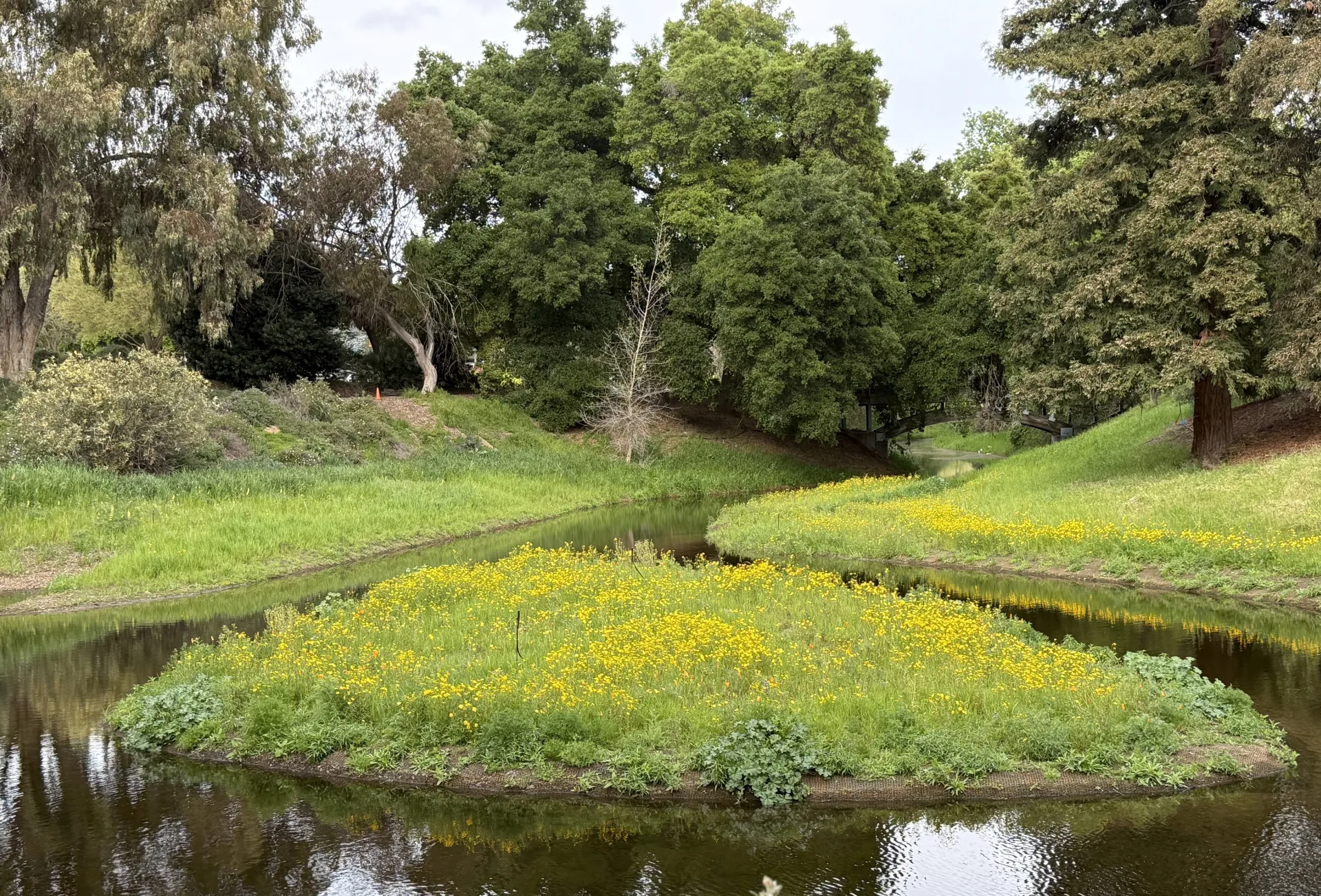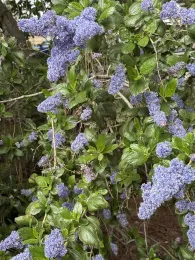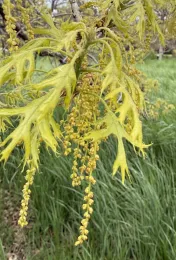
Article by Lorie Hammond -
A friend and I walk the UC Davis Arboretum every week. Each time she comments: “How can it be so different?” And every time, we are amazed. There is never a bad time to see this ever-changing collection of plant communities. Always beautiful. Always different. But if you had to choose, spring is the best time. So go right now.

Some people don’t know that you can enter the Arboretum from either end. You can walk the whole circuit or, if you are a slow meanderer like me, walk half on one day, and half on another, starting at either end. The downtown end, marked by a sculptural shovel arch, is most easily accessed from the parking lot at D and First Streets. The west end is south of the vet school. It is accessed by going south on La Rue Drive, then right on Garrod Drive, which winds around past Scrubs Café and the Arboretum Teaching Nursery. Avoid entering any parking lots, and you will find an entry point which borders the charming water-wise herb garden and an extensive shady oaks collection.
The Arboretum would not be the same without its waterway. Many people are aware that it was drained for a massive remake last spring and fall. Never fear. Signs along the Arboretum explain that this project is a “year ahead of schedule”. Has anyone ever heard of a large public project that can make this claim? And indeed, the water is back, and it is clearer and more beautiful than before. This waterway provides habitat for many species of waterfowl (egrets, herons, ducks, and geese) as well as the Western Pond Turtle, pictured here. Watch for baby ducklings in spring.

The newly refilled waterway is beautifully designed. A surprising amount of visual diversity has been created by a mix of narrow passages, large ponds, and labyrinths of grassy islands. Its reformation had at least two purposes: 1) to incorporate a better circulation system to keep this non-flowing body of water clean, and 2) to create a more natural and complex landscape with improved aesthetics, wildlife habitat, and storm drainage. Viewing this new waterway is worth a trip to the Arboretum in itself, but this spring visitors are in for a rare treat. At the west end of the waterway, islands created as habitat for waterfowl have been planted with a colorful array of wild grasses and spring flowers which rival a highland meadow.
Native plants are adapted to complete their blooming cycles in spring while winter rain still nourishes their roots. I believe that the queen of our California spring is our blooming Western Redbud (Cercis occidentalis). The Arboretum has planted many of this spectacular plant over the years. If you come in March or April, you won’t want to miss the Redbud Collection, just east of the Arboretum offices, and which also lights up the woods in other places too.
Ceanothus, or California lilac, is another spring wonder. The genus Ceanothus has between fifty and sixty species, from large upright bushes to low-lying shrubs. All bloom in spring with light blue to lilac-colored blooms, which emit a pungent honey-like scent and are great targets for pollinators.

Dotted throughout the Arboretum is the state flower, the California poppy (Eschscholzia californica), which provides magnificent orange accents along green fields and banks. Nurseries now carry seeds for miners’ lettuce and California poppies, which can be sewn in fall in your own garden and will come up after the winter rains. If you are lucky, they will return year after year.
Have you ever noticed an oak tree in bloom? Many people don’t slow down enough to notice oak blossoms, since they are small and green and do not stand out like colorful flowers. In the beautiful and diverse oak grove at the west end of the Arboretum, you can see many examples of both deciduous (losing leaves in winter) and evergreen oak trees. While people vary in their use of words by region, I just learned an interesting fact. In Spanish, the word “encino” generally refers to a live oak tree, such as the Coast Live Oak, which is green all year. In contrast, the word “roble” refers to oaks like the Valley Oak, which lose their leaves in winter. All oaks share the Latin genus “Quercus”, followed by many species names which mark the huge variety of types from all over the world. An abundance of these are displayed in the Arboretum’s oak grove. As an extra treat for the passerby, most Arboretum oaks are marked by a ceramic plaque displaying the tree, its leaf shape, and various creatures that live in it. These plaques, along with a large circular bench at the beginning of the oak grove, were made in a collaboration between the entomology and art departments at UC Davis.
Consider becoming a member of the UC Davis Arboretum and Public Gardens. As a frequent walker, I consider this membership ($48 a year for an individual) to be my best investment. Membership also provides special access to spring and fall plant sales, held at the Teaching Nursery on Garrod Drive. An amazing array of plants are offered, many of which are hard to access in other places. Check the UC Davis Arboretum and Public Gardens website for more information. Proceeds support the Arboretum and Public Gardens.
Photos by Lorie Hammond, adapted.
